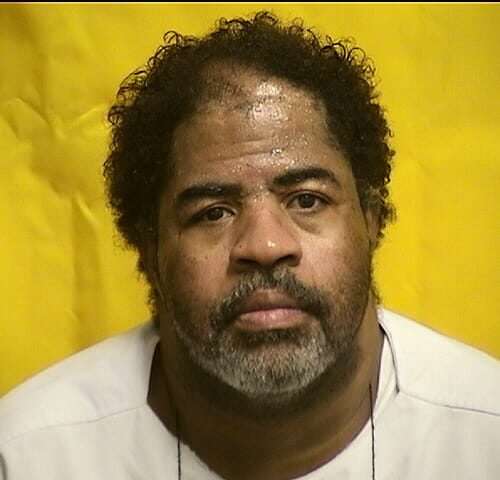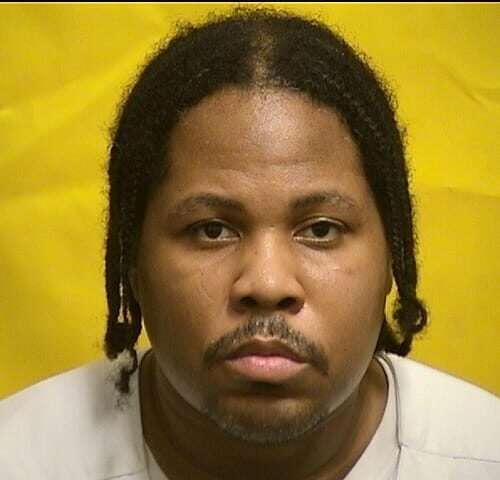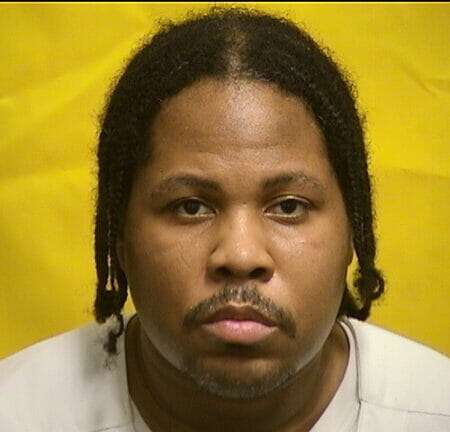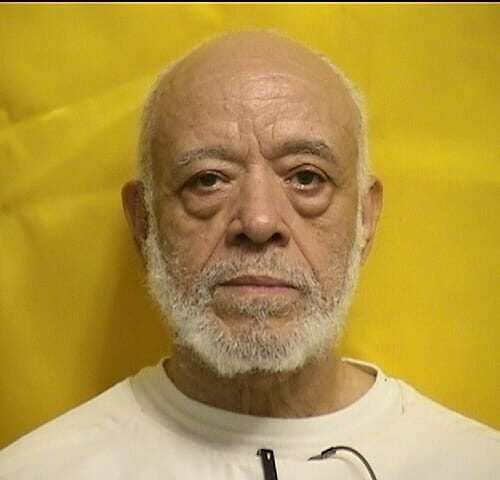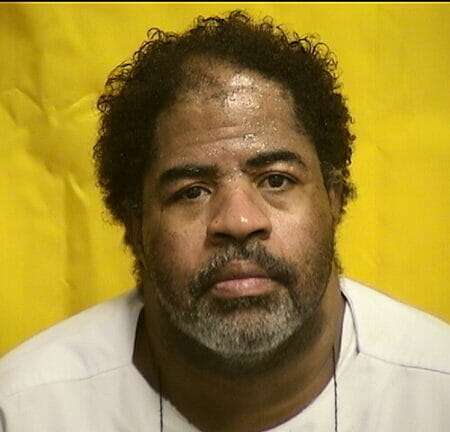
Phillip Elmore was sentenced to death by the State of Ohio for a kidnapping and murder. According to court documents Phillip Elmore broke into the victim’s home and waited for her to return. When Pamela Annarino arrived she was strangled and hit in the head with a pipe. Phillip Elmore was arrested, convicted and sentenced to death
Phillip Elmore 2021 Information
Number A458539
DOB 07/15/1963
Gender Male Race Black
Admission Date 11/19/2003
Institution Chillicothe Correctional Institution
Status INCARCERATED
Phillip Elmore More News
On June 1, 2002, 47-year-old Pamela Annarino attended her son’s wedding ceremony and reception. While Annarino was attending these activities, Elmore broke into her Newark home and waited for her to return. Elmore and Annarino had previously had a personal relationship.
{¶ 3} After she arrived home, Elmore murdered Annarino by strangling her and hitting her in the head with a pipe. Elmore then stole Annarino’s purse and fled in her car. Subsequently, Elmore was convicted of the aggravated murder of Annarino and sentenced to death.
State’s case
{¶ 4} Around 9:30 a.m. on June 1, 2002, Annarino left her home on West Postal Avenue in Newark to attend her son’s wedding. Annarino and her sister, Janna Wilfong, drove to the wedding in Wilfong’s car. Around 10:00 a.m. or 11:00 a.m., Timothy Grooms, a friend of Annarino, went to her house to look after Annarino’s dog while she was at the wedding. However, Grooms could not get into the house because he could not find the house key where Annarino was supposed to have left it.
{¶ 5} At 12:30 p.m., Annarino arrived home from the wedding and went into her house. Shortly thereafter, Annarino drove her Toyota Camry to the wedding reception.
{¶ 6} During the late afternoon on June 1, Annarino arrived home. Gloria Cooperider, Annarino’s next-door neighbor, saw Annarino exit her car and walk toward the back door of her house. “Very shortly thereafter,” Cooperider saw Elmore “get in [Annarino’s] car, start it up and pull away.” Cooperider recognized Elmore because she had met him approximately two years earlier when Elmore and Annarino were dating.
{¶ 7} Around 5:00 p.m. or 6:00 p.m. on June 1, John Williams, who lived with Cooperider, was returning to their home on West Postal Avenue. As Williams turned onto West Postal Avenue, he saw Elmore driving Annarino’s car. Williams waved at Elmore, and Elmore “[k]ind of smiled” and waved back, according to Williams.
{¶ 8} On June 2 and 3, Grooms returned to Annarino’s home, but he still had no key to the house, and he left after concluding that Annarino was not there. On June 4, Grooms and Clifton Rodeniser, Annarino’s brother-in-law, went to Annarino’s home to check on her. They found the front and back doors locked, but Grooms pried open a window, and they entered the house. After an extensive search of the home, Grooms and Rodeniser found Annarino’s body in a bathtub in the second-floor bathroom. Rodeniser then notified the police by calling 911.
{¶ 9} Around 7:15 p.m. on June 4, police arrived at Annarino’s home. Annarino’s body was covered in blood. A paramedic testified at Elmore’s trial that Annarino “had a large laceration over the right side of her skull above the eye approximately three to four inches in length with bone fragments sticking out.” A pair of elastic leggings was tied around her neck.
{¶ 10} Police investigators found blood spatters on the ceiling, the tub, and the wall area behind the tub. According to Timothy Elliget, a Newark police criminalist, “blood spatter on the ceiling area above the tub * * * was consistent with castoff from a weapon.” Elliget testified that blood spatters also “came out in a V pattern from the head and deposited on * * * the wall surrounding the back of the tub” and that the spatter pattern “was consistent with * * * an object striking the victim’s head in that area.” Finally, the absence of blood spatters at the end of the bathtub created a “void pattern” that led Elliget to conclude that Annarino was in the bathtub when the attack occurred.
{¶ 11} Investigators found evidence that the back door had been forced open. The inside edge of the door near the door lock had been damaged, and pry marks were visible on the door as well. The lock plate was also missing. Newark police officers found three fingerprints on the back door, and Officer Elliget testified that those prints were a match to Elmore’s “left ring finger, the left middle finger and the left index finger.” Police officers also found a shotgun and a shell underneath Annarino’s bed.
{¶ 12} The garage behind the house was also searched by the officers, who found shoe prints on the garage floor and on a piece of paper inside the garage. A shoe print from the garage and a shoe print from the shoes that Elmore was wearing at the time of his arrest were later compared. According to Elliget, the shoe print from the garage and Elmore’s shoe print “are of a similar pattern.”
{¶ 13} On June 5, Dr. Charles Lee, a Deputy Coroner for Licking County, conducted the autopsy on Annarino. The victim had several lacerations on the top of her head caused by “four to five” blows from a blunt instrument. Dr. Lee found that the “multiple blunt force injuries to the head” were the cause of Annarino’s death. He also determined that Annarino had been strangled with the leggings that were found around her neck. Strangulation could have easily rendered Annarino unconscious, and it was a contributing factor in her death, according to Dr. Lee. Finally, Dr. Lee testified that lacerations on Annarino’s left forearm were defensive wounds caused by a blunt instrument before Annarino was killed.
{¶ 14} After speaking with Annarino’s neighbors on the evening of June 4, the police determined that Elmore was their primary suspect, and they broadcast his name and the description of Annarino’s Toyota Camry to other law-enforcement agencies. Around 4:00 a.m. on June 5, a Columbus police officer, Shea McCracken, spotted Annarino’s Toyota Camry in Columbus and followed the car into a parking lot. The two occupants of the car exited the vehicle, and they were identified as Scott Darthard and Shawnta Hale.
{¶ 15} Based upon information received from Darthard and Hale, Columbus police officers conducted a stakeout of Hale’s home in Columbus. During the early morning hours of June 5, police officers saw Elmore leave Hale’s home and walk down the street. They then arrested Elmore and transported him to the headquarters of the Columbus Police Department.
{¶ 16} Around 7:00 a.m. on June 5, Newark Detectives Steven Vanoy and Steven Baum interviewed Elmore. After being advised of his Miranda rights and waiving those rights, Elmore admitted going to Annarino’s home on June 1. He also told the detectives that he and Annarino had argued that day, and he acknowledged that he had taken Annarino’s car. According to Detective Vanoy, Elmore then said, “I did it. I’m guilty. That’s it.” Later that morning, Elmore was transported to the Newark Police Department.
{¶ 17} At around 10:00 a.m. on June 5, Elmore informed Detective Vanoy that he wanted to talk further. After again waiving his Miranda rights, Elmore provided a detailed confession to Annarino’s murder. Detectives Vanoy and Baum recorded Elmore’s statement on audiotape. Elmore stated that around 6:00 a.m. on June 1, he went to Annarino’s house and “stayed in the garage until she left.” He then broke into the house by prying open the back door with a screwdriver. Elmore went to the upstairs bedroom and found the shotgun that Annarino had kept under her bed. He then took the shotgun to the downstairs kitchen.
{¶ 18} According to Elmore, after Annarino arrived home from the wedding reception, they sat in the kitchen, talked, and argued. Elmore held the shotgun while he was talking to her. During their argument, Elmore gave Annarino the shotgun and told her “if you want to kill me you can kill me.” Elmore explained to the detectives that he had taken the shells out of the shotgun, but it is unclear whether Annarino knew that the gun was unloaded. Annarino then went to her upstairs bedroom to change clothes. She took the shotgun with her. Elmore followed Annarino, and they continued to argue upstairs.
{¶ 19} While they were in the upstairs bathroom, Annarino “just went off on [him],” according to Elmore. He said, “She just got in my face and started * * * screaming and stuff.” Elmore told Annarino, “I’m gonna get outta here. * * * [Y]ou go where you have to go and I’m gonna leave. * * * [B]ut let me tie you up before you get a chance to call the police.”
{¶ 20} According to Elmore, they continued to argue. At some point, Elmore went downstairs, picked up a lead pipe that he had brought into the house when he broke in, and returned to the upstairs bathroom. He then “hit her in the arm and she fell back in the tub.” Elmore explained to the detectives, “It’s like I just blacked out * * * [and] I hit her again * * * three or four times” on her head.
{¶ 21} Then, according to Elmore, he went downstairs, “grabbed her purse, locked the door * * * got in the car and * * * left.” He went to a friend’s house, changed his pants, and drove Annarino’s car to Columbus. He said that he put the pipe and Annarino’s purse into a bag and threw the bag into a dumpster in Columbus.
{¶ 22} Elmore told the detectives, “[I] just wanted to scare [Annarino]. * * * I didn’t want to hurt her at all.” He denied tying the leggings around her neck, explaining instead that he had put them “around her mouth.”
{¶ 23} On June 6, Elmore was questioned again by the detectives. After waiving his Miranda rights for a third time, Elmore continued to deny that he had strangled Annarino. However, Elmore recalled that he had tied her hands with a “yellow floral pattern” dress or shirt. He added that he had untied her hands when she complained that they were bound too tightly.
{¶ 24} On June 14, Detective Baum interviewed Elmore again. After waiving his Miranda rights, Elmore said that he had remembered additional details of the crime, including “choking [Annarino] before [he] hit her.” He added, “I didn’t choke her with the stretch pants. I choked her with my hands.”
{¶ 25} The police never found the lead pipe, Annarino’s stolen purse, or the yellow floral-patterned dress or shirt. They did, however, recover the bloodstained shorts that Elmore was wearing on the day of the murder. A key and a lock-plate cover were found in the shorts pocket. Investigators found that the key operated the deadbolt lock on Annarino’s back door. The lock plate also fit into the door panel and was the same brand as the deadbolt lock.
{¶ 26} Jennifer Duvall, a DNA analyst at the Ohio Bureau of Criminal Identification and Investigation, conducted DNA tests on the bloodstain found on Elmore’s shorts. Testing revealed that DNA from the bloodstain on the shorts was consistent with Annarino’s DNA. According to Duvall, the chance of finding this same DNA profile in a random member of the population “would be one in over five quadrillion in the Caucasian population, one in over six quadrillion in the African-American population, and one in more than 14 quadrillion in the Hispanic population.”
{¶ 27} At Elmore’s trial, the defense introduced a laboratory report showing that the shotgun found under the victim’s bed was fully functional. The defense presented no further evidence until the penalty phase of the trial.
